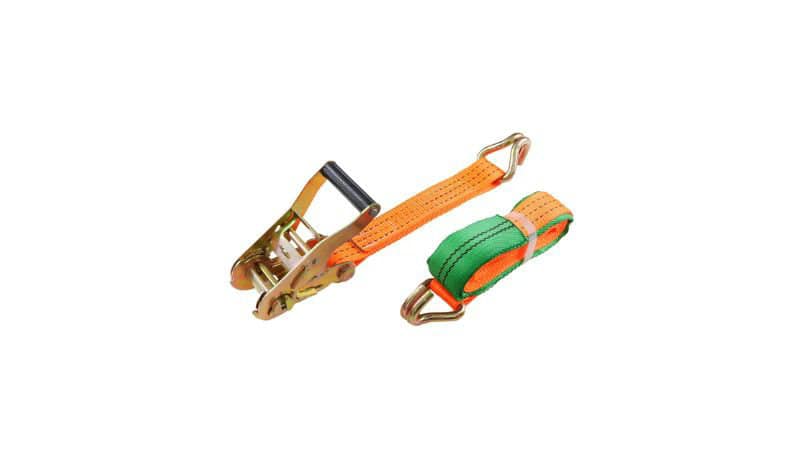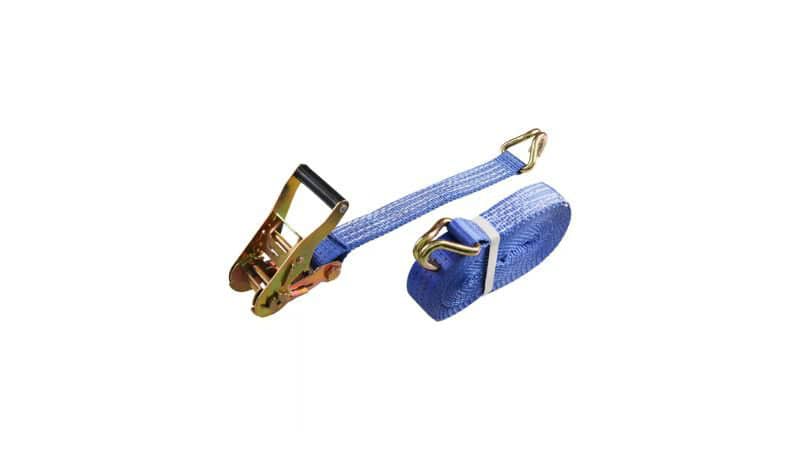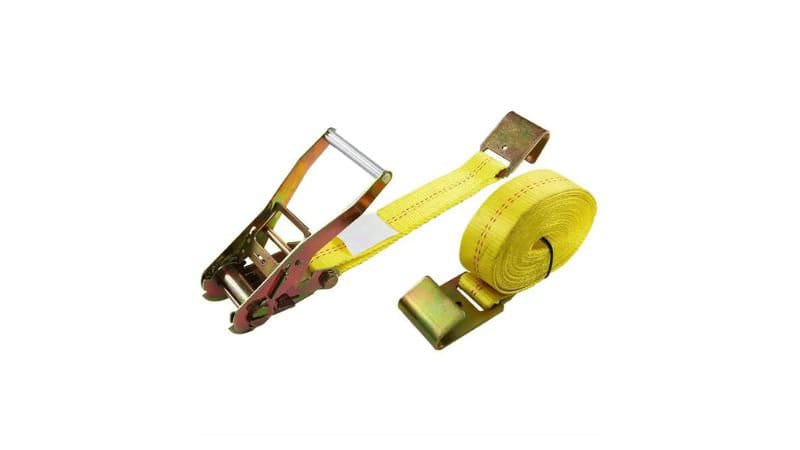
The ratchet strap is an indispensable tool that has revolutionized how we secure and transport cargo. From flatbed trucks to household trailers, these ingenious devices play a crucial role in keeping loads safe and stable. But have you ever wondered about the origins of this ubiquitous piece of equipment? Who invented the ratchet strap, and how has it evolved over time to become the rugged, reliable workhorse we know today?
In this article, we’ll delve into the murky origins of the ratchet strap, tracing its development from early ancestors to key breakthroughs in materials science and mechanical design in the 20th century.
So buckle up and join us on a journey through the fascinating, untold history of this humble yet essential device. By the end, you’ll never look at a ratchet strap the same way again.
The History of Ratchet Straps

Ratchet straps have a fascinating history that stretches back hundreds of years.
In ancient civilizations, people used natural materials like hemp and jute ropes to secure and transport goods. These early methods laid the foundation for what would eventually become the modern ratchet strap.
During the Industrial Revolution, the need for stronger and more reliable materials grew. This led to the first prototypes of ratchet straps. They were basic and often made from metal and heavy-duty fabrics.
One source initially claimed that Matthias Baldwin is the inventor who patented the first modern ratchet strap in 1853. However, this information was later retracted, as Baldwin is more well known for his work in the locomotive industry and evidence of this specific patent is lacking.
Gustave A. Audiffren, a French engineer, played a key role in the development of the ratchet strap. In the early 1900s, he patented his design, and it quickly gained popularity, especially with the French military. They used these straps to secure cargo.
World War II brought further advancements. Resources and materials like nylon became common. This made ratchet straps stronger and more dependable.
Later, in the 1960s, nylon webbing became widespread. It was much stronger and more durable than previous materials, allowing ratchet straps to handle heavier loads.
Today, ratchet straps are an essential tool in many industries. From securing loads on trucks to helping with everyday tasks, they have come a long way from their humble beginnings.
What are the Materials and Mechanism of Rachet Straps

Ratchet straps are made from strong, synthetic materials like nylon, polyester, and polypropylene. These materials provide excellent durability and resistance to wear and tear.
Nylon webbing is known for its high strength and elasticity. It can handle heavy loads but may absorb water and stretch, making it less ideal in wet conditions.
Polyester webbing is a popular choice because it doesn’t stretch as much as nylon. It’s resistant to mildew, mold, and UV rays, making it great for outdoor use.
Polypropylene is lightweight and resistant to chemicals and mildew but not as strong as nylon or polyester. It’s often used for lighter loads.
The ratchet mechanism is the heart of the ratchet strap. It’s usually made of metal and allows you to tighten the strap by simply turning the handle.
Ratchet straps come in different styles and widths, typically ranging from 2 to 4 inches. These widths are designed to handle various loads and applications.
In some designs, rubber pads are added to protect delicate surfaces and prevent slipping. This helps keep your cargo secure even during bumpy rides.
Using these materials and designs, ratchet straps provide a reliable way to secure cargo for transportation.
Why You Need a Rachet Strap

Ratchet straps play a big role in various industries, especially in transportation and logistics.
They are used to secure cargo during transit. This makes it safer and reduces the risk of damage to goods. In turn, this has a positive effect on the economy by lowering costs linked to damaged cargo.
In the industrial sector, ratchet straps are vital for transporting large items. Materials like metals, wood, and machinery are often transported on racks and flatbeds. Ratchet straps ensure they stay in place, making the movement of goods more efficient and cost-effective.
Cargo control and securement is another reason. They help in keeping heavy-duty items secured during transportation. This helps businesses save money on repairs and replacements due to cargo shifting and getting damaged.
They are also used in various applications beyond just transport. For example, in construction, they help secure building materials. This prevents delays and adds to the efficiency of construction projects.
In logistics, proper strapping can lead to faster loading and unloading times. This improves overall productivity in warehouses and distribution centers. When items are easy to handle, fewer work hours are wasted, which contributes to financial savings.
Thanks to ratchet straps, cargo transportation has become much more reliable. Industries can move their products more safely, leading to higher customer satisfaction and fewer returns due to damaged goods.
Innovation and Future Trends of Ratchet Straps
Ratchet straps have come a long way from their early designs, showing remarkable technological advancements and offering eco-friendly alternatives, these innovations make securing loads safer and more efficient.
Technological Advancements
New technologies have made ratchet straps more user-friendly and effective. Modern designs include ergonomic handles, reducing strain during use. This innovation is particularly helpful for those who frequently use ratchet straps for securing heavy equipment or boxes.
Materials have also evolved. High-strength synthetic fibers, like nylon and polyester, replace older materials, providing greater durability and resistance to weather conditions. Additionally, automated tensioning systems improve precision, making it easier to achieve the perfect tension without guesswork.
New fasteners have also emerged, allowing for quicker and easier adjustments. These fasteners are often used in less demanding applications but provide a convenient alternative to traditional ratchet mechanisms.
Environmentally Friendly Alternatives
The focus on sustainability has led to the development of eco-friendly alternatives. Grandlifting now is inventing ratchet straps made from recycled materials, reducing the environmental impact of production. These straps are just as robust and reliable as their traditional counterparts.
We have ventured into using organic materials, which are biodegradable and renewable. This not only helps reduce the carbon footprint but also offers consumers an eco-conscious choice.
Packaging has also seen improvements. Straps now often come in recyclable or reduced-waste packaging, aligning with broader environmental goals. These inventions ensure that you can secure your load while also caring for the planet.
Frequently Asked Questions
What is an alternative designation for a ratchet strap?
Ratchet strap is also known as ratchet tie-down, lashing strap, or tie down strap.
Is it permissible to utilize ratchet straps according to transportation regulations?
Yes, ratchet straps are commonly used in transportation and are designed to meet safety regulations. They are crucial for safely securing cargo on flatbed trailers and other vehicles.
How do ratchet straps differ from cam buckle straps in their mechanism and usage?
Ratchet straps use a ratcheting mechanism to tighten and secure loads, while cam buckle straps rely on a cam mechanism. Ratchet straps are better for heavier loads and require less effort to tighten.
What purpose do the hooks on ratchet straps serve in their functionality?
Hooks are important fittings of ratchet straps. Hooks on tie-downs are used to attach the straps to anchor points on the vehicle or cargo. They ensure that the strap remains securely in place during transport.
